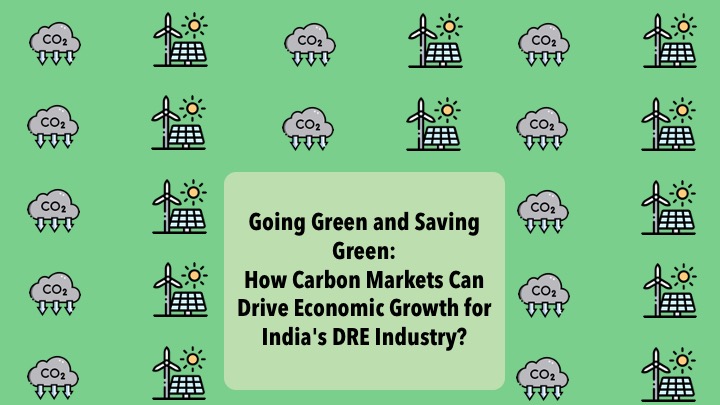
Going Green and Saving Green: How Carbon Markets Can Drive Economic Growth for India’s DRE Industry?
Climate change has had an overwhelming impact on the planet, and it is now more critical than ever to take measures to reduce greenhouse gas emissions. Carbon markets have emerged as a promising solution to help combat this issue. By providing a platform for trading carbon credits, organizations can buy and sell these credits, which represent the amount of carbon dioxide or other greenhouse gases that have been reduced or eliminated from the atmosphere. In this blog post, we’ll explore the role of carbon markets in driving economic growth in India’s decentralized renewable energy (DRE) industry.
The DRE industry in India presents a unique opportunity for carbon markets to drive economic growth. This is largely due to India’s ambitious target of installing 500 GW of renewable energy by 2030, coupled with the fact that the country is one of the largest energy consumers globally. By embracing carbon markets, India can make significant progress in achieving its goal of reducing its carbon footprint, while simultaneously stimulating economic growth in the DRE sector. The following are ways in which carbon markets can stimulate economic growth in India’s DRE industry:

In India, the National Clean Energy Fund (NCEF) regulates the Carbon Market under the Ministry of New and Renewable Energy (MNRE). The NCEF’s primary objective is to promote the growth of the renewable energy sector by offering financial assistance via different schemes and initiatives, including the Clean Development Mechanism (CDM) and the National Action Plan on Climate Change (NAPCC).
DRE initiatives, such as mini-grids, rooftop solar installations, and biomass power plants, can generate carbon credits under the CDM program by replacing fossil fuel-based electricity production. These credits can be traded in the carbon market, providing additional revenue streams for DRE project developers.
Furthermore, by participating in the Carbon Market, DRE projects can draw the interest of green investors who are seeking sustainable investments with a positive environmental impact. Carbon credits can serve as collateral for these investments, reducing the cost of capital for DRE projects.
In addition, the Carbon Market can incentivize the adoption of energy-efficient strategies in DRE projects, as the resulting emission reductions can generate carbon credits. This can result in the creation of more environmentally friendly and energy-efficient DRE projects that produce additional revenue streams through the sale of carbon credits.
Thus, the utilization of carbon markets presents a viable opportunity for driving economic growth within India’s DRE industry. With the implementation of appropriate incentives, organizations can allocate their investments towards renewable energy projects and simultaneously generate revenue by trading carbon credits. This establishes a financial motivation for businesses to invest in the DRE sector, which would lead to amplified investments, diminished expenses, job creation, and the development of better energy security.


